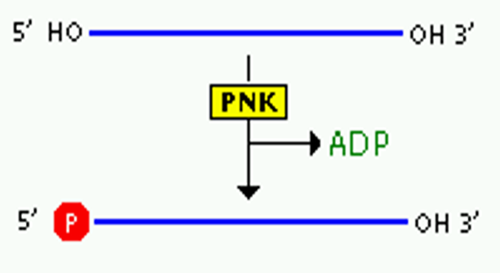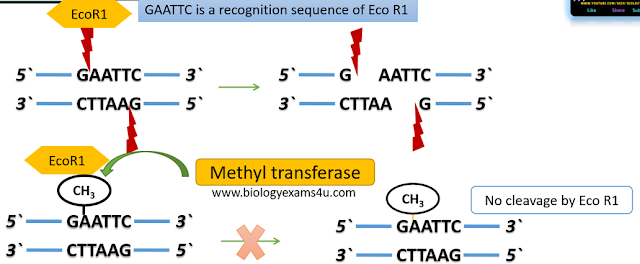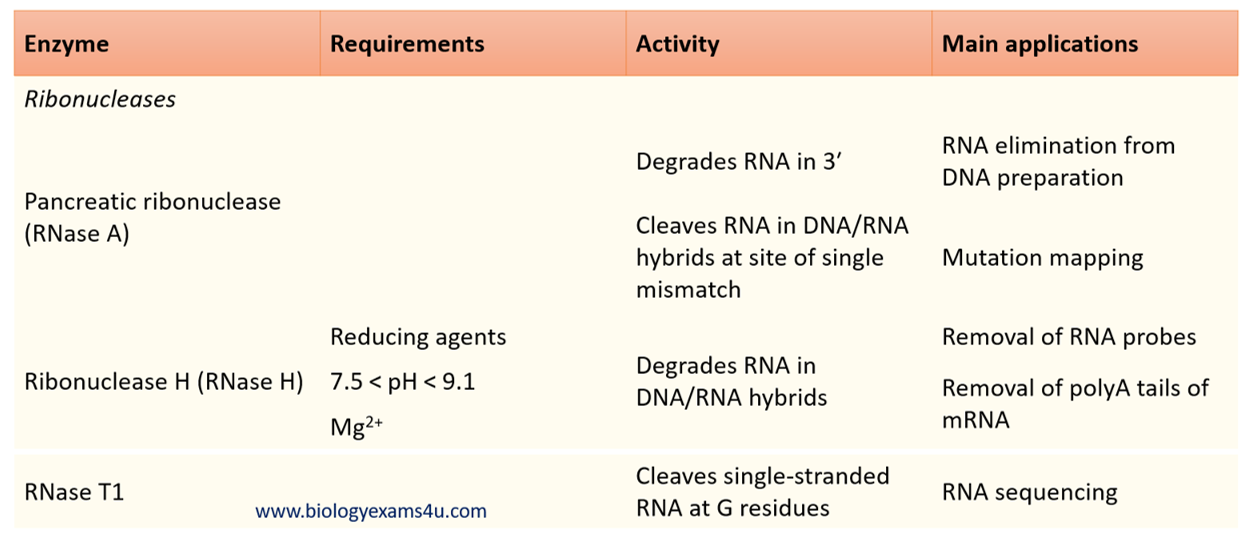Enzymes are biological catalysts that speeds up the rate of reaction by lowering activation energy without undergoing any change by itself.
In this post, lets
discuss 12 major enzymes used in molecular biology laboratory.
I. Nucleases: Nucleic
acid degrading enzymes
- Cleaves phosphodiester bonds in the nucleic acid backbone.
- Nucleic acid hydrolyzing enzymes
- Belongs to the class nucleases
a) Endonuclease: makes
cuts within the DNA molecule
b) Exonuclease :
remove nucleotides from the ends
c) Ribonuclease: RNA
degrading enzymes
Cleaves phosphodiester
bonds in the ribonucleic acid backbone.
Rnase H: RNA degrading
enzyme that selectively removes the mRNA from RNA-DNA hybrid to separate the
cDNA to synthesize the second strand.
d) DNase I: DNA
degrading enzymes
- DNA specific endonuclease
- It hydrolyzes phosphodiester bonds producing mono- and oligo deoxyribonucleotides with 5'-phosphate and 3'-OH groups.
II: DNA Modifiers: These enzymes are involved in the synthesis and modification of the nucleic acids.
a) DNA polymerase:
It is involved in elongation of the strand by nucleotide addition. It is a template
directed enzyme that adds complementary nucleotides to the free 3’ OH end of
the strand. All DNA polymerases require a primer that provides free 3’OH end
for addition of nucleotides.
b) Reverse Transcriptase:
Enzyme that makes DNA strand using mRNA as template strand.
- Used in the making of cDNA from mRNA for cDNA library preparation.
c) Alkaline Phosphatase:
- Enzyme that removes terminal phosphate group (PO4-2 ) at the 5’ end of a DNA or RNA-Prevents self-annealing of vector DNA.
Application: Dephosphorylation
of DNA
d) Polynucleotide Kinase:
- This enzyme transfers or add phosphate from ATP to 5’OH group of dephosphorylated DNA or RNA.
- Used: To rephosphorylate the 5’ end of dephosphorylated DNA (vector DNA) or RNA.
- Used in radiolabeling: to transfers radioactive P32 from ATP to dephosphorylated 5’ end of DNA or RNA.
d) Terminal Nucleotidyl Transferase:
- Enzyme that adds nucleotides to 3’OH group of a DNA fragment.
- Used to make homopolymer sticky or cohesive tails at 3’ end of DNA fragment; either poly A tail or poly T tail. This helps in joining fragments with blunt ends.
- Used to make radioactive DNA probes by end labeling.
e) Methyl Transferase:
- Enzyme that adds a methyl group to cysteine and adenine of DNA
- Uses: To Methylate desired DNA in the rDNA to protect it from cleavage by restriction enzymes of restriction modification systems of the host
- To protect restriction sites from a restriction enzyme, if the target DNA has many sites for that particular restriction enzyme.
III: Ligases: DNA and
RNA ligases
- Ligases are Joining enzyme that joins DNA fragments by forming phosphodiester bond. The process is called ligation.
- Join DNA fragments with blunt or sticky ends, add linkers or adaptors to DNA, or repair nicks.
- Catalysing the formation of a phosphodiester bond between a 3′-OH and a 5′-phosphate group at a single-strand break in double-stranded DNA
- Requires ATP or NAD+ for its activity
- Eg: T4 ligase
Download free resources or purchase some.
Please rate the product and follow us on store.
Thank you so much
Rittié L, Perbal B. Enzymes used in molecular biology: a useful guide. J Cell Commun Signal. 2008 Jun;2(1-2):25-45.















